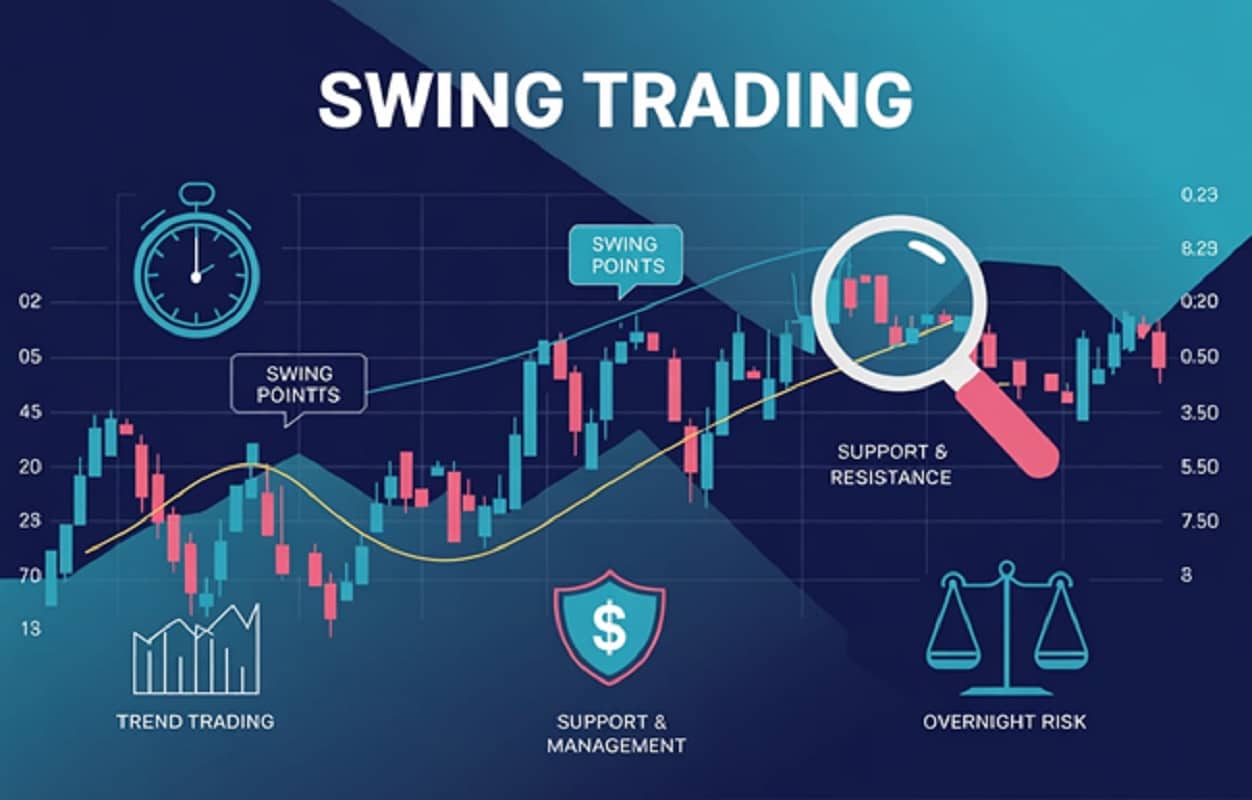In the world of stock analysis, numerous metrics help evaluate investments. Among these, “stock float” is fundamental yet often misunderstood. Stock float represents the number of a company’s shares readily available for public trading on the open market. It measures the active supply of shares investors can buy and sell daily.
Why It Matters
Understanding stock float is crucial for all investors. It offers insights into a stock’s potential liquidity, price volatility, and ownership structure. Analyzing float helps gauge how easily a stock trades, its price fluctuation susceptibility, and the control balance between insiders and the public. Float analysis is vital for investment decisions and trading strategies.
Report Roadmap
This report explores stock float comprehensively. It defines the term, differentiating it from outstanding and authorized shares. It covers float calculation, identifying excluded shares. The significance of float regarding liquidity, volatility, and ownership is examined.
High-float versus low-float stocks are compared. The report also discusses float dynamics, advanced concepts like float rotation and short squeezes, free-float methodology in indices, and finding float data.
Defining Stock Float: What It Is and Isn’t
Core Definition
Stock float (also “public float” or “free float”) is the number of a company’s unrestricted shares issued to the public, available for trading on exchanges. These shares can be freely bought and sold by public investors. Float represents a subset of total issued shares, constituting the pool active in secondary market trading.
Distinguishing float from authorized and outstanding shares is key.
- Authorized Shares: The maximum shares a corporation can legally issue per its articles of incorporation. This limit, set at creation, can only be changed by shareholder vote. Companies don’t have to issue all authorized shares.
- Outstanding Shares: The total shares issued and held by all shareholders , including public investors, restricted insider shares, and employee holdings. Found on the balance sheet , they’re used for market capitalization (Outstanding Shares × Price). Repurchased shares (Treasury Stock) are usually subtracted.
- Floating Shares (Float): Calculated by subtracting non-publicly tradable shares (restricted/closely held) from outstanding shares. Represents the active supply in the secondary market.
Hierarchy: Authorized Shares ≥ Outstanding Shares ≥ Floating Shares.
Float as the True ‘Market Supply’ Metric
Outstanding shares include locked-up or insider-held stock not actively traded daily. The secondary market operates on shares actually available for buying and selling. Stock float measures this tradable pool. For understanding immediate supply/demand dynamics influencing daily prices, liquidity, and volatility, float is the most relevant supply measure. Major indices like the S&P 500 use free-float methodologies, highlighting its importance.
Calculating Stock Float: The Mechanics
The Basic Formula
Calculating float involves subtracting restricted or closely-held shares from total outstanding shares.
- Float=Outstanding Shares−Restricted/Closely−Held Shares
Accurately identifying excluded shares is critical:
- Restricted Stock: Shares (often for insiders/employees) with sale restrictions like lock-up periods or vesting schedules. Trading may require special permission.
- Closely-Held Shares: Held by entities/individuals with significant influence unlikely to trade frequently (founders, officers, directors, controlling investors, governments, foundations).
- Employee Stock Ownership Plans (ESOPs): Shares in formal ESOPs are often excluded.
- Treasury Stock: Shares repurchased by the company, not publicly available.
- Large Block Holders / Affiliates (SEC Definition): Shares held by SEC-defined “affiliates” (controlling entities/persons) are generally excluded. Determining affiliate status for large shareholders (>5-10%) depends on facts like voting power, market impact potential, management relationships, and voting agreements.
- Derivative Securities: Options, warrants, RSUs aren’t counted directly, but exercising them can issue new shares, increasing outstanding shares and float.
Everyday trading or shorting doesn’t change the calculated float; it just redistributes existing float shares.
Step-by-Step Calculation Example
TechCorp Inc.: Authorized: 20M, Issued: 10M, Treasury: 1M, Insider Restricted: 1.5M, ESOP: 0.5M, Affiliate Holdings: 1M.
- Outstanding Shares: 10M (Issued) – 1M (Treasury) = 9M.
- Excluded Shares: 1.5M (Insider) + 0.5M (ESOP) + 1M (Affiliate) = 3M.
- Float: 9M (Outstanding) – 3M (Excluded) = 6M shares.
TechCorp’s float is 6 million shares.
Calculation Nuances and Data Source Dependence
While the formula is consistent , identifying “restricted” or “closely-held” shares, especially large institutional blocks or affiliates, can be subjective. Different data providers (S&P, FTSE, MSCI) use varying methodologies. This subjectivity means reported float figures can differ slightly across sources. Float numbers are often precise estimates, not absolute certainties.
Why Stock Float Matters: Impact on Investors and Markets
Float size significantly impacts stock behavior, risk, and opportunity.
Indicator of Market Liquidity
Liquidity is the ease of trading without significant price impact. Higher float generally means higher liquidity. A larger share pool facilitates smoother transactions. Lower float usually implies lower liquidity , making trading, especially large orders, more difficult.
Driver of Stock Price Volatility
Volatility measures price variation. Float has an inverse relationship with volatility. Low-float stocks are more volatile; limited supply means moderate trading can cause large price swings. High-float stocks generally have lower volatility and more stability. The larger share pool absorbs activity, dampening price impact.
Insights into Company Ownership and Control
Float percentage (Float / Outstanding Shares) reveals ownership structure. Low float percentage means significant insider/founder control , potentially aligning interests but concentrating power and market impact risk if insiders sell. High float percentage suggests broader public ownership and less concentrated insider control.
Influence on Bid-Ask Spreads
The bid-ask spread (difference between highest buy price and lowest sell price) is influenced by float. Low-float stocks often have wider spreads due to lower liquidity , increasing transaction costs. High-float stocks typically have tighter spreads.
The Interplay of Liquidity, Volatility, and Float
Liquidity and volatility are linked via float. Float determines tradable supply. Higher float increases liquidity (easier trading) , which dampens volatility (larger trades absorbed with less price impact). Low float restricts supply, lowering liquidity. In low liquidity, trades represent a larger fraction of available shares, causing bigger price shifts and amplifying volatility. Float is the market structure element connecting trading ease (liquidity) and price fluctuation magnitude (volatility).
High Float vs. Low Float: A Comparative Analysis
Stocks are often categorized by float size (low, medium, high).
Defining the Categories
- Low Float: Relatively small number of publicly tradable shares, often cited as <10M or <10-20M. Some definitions extend to 50-100M. Day traders often target <20M float.
- Medium Float: Middle ground, often 10M-100M shares. Frequently mid-cap companies ($2B-$10B market cap).
- High Float: Large number of public shares, usually >100M, potentially billions. Often associated with large-cap companies.
Characteristics Profile
- Low Float Stocks: High price volatility ; lower liquidity ; wider bid-ask spreads ; prices highly sensitive to volume/news, susceptible to sharp moves and manipulation ; finding counterparties can be challenging.
- High Float Stocks: Lower volatility, greater stability ; higher liquidity ; tighter bid-ask spreads ; large trades often have minimal price impact ; smoother price discovery.
Implications for Investment & Trading Strategies
- Low Float Stocks: Attract short-term traders (day traders, scalpers) seeking profit from rapid swings. High risk requires disciplined management. Generally avoided by long-term and institutional investors.
- High Float Stocks: Preferred by institutional investors (mutual funds, pensions, ETFs). Suited for long-term, buy-and-hold investors prioritizing lower risk and stability.
Float as a Determinant of Trading Style Suitability
Float characteristics (volatility, liquidity) naturally sort market participants. Low float attracts high-risk-tolerance, short-term traders (day traders). These same features deter risk-averse, long-term investors and large institutions prioritizing stability and efficient execution.
High float’s stability and liquidity make it a staple for long-term and institutional portfolios , but its muted volatility is less appealing for traders focused solely on rapid percentage moves. Float size shapes the ecosystem of traders and investors for a stock.
The Dynamic Nature of Stock Float
Stock float isn’t fixed; it changes due to corporate actions.
How Float Changes
1. Share Buybacks: Company repurchases shares, reducing outstanding shares and float (“float shrink”). Can support price or boost EPS.
2. Secondary Offerings: Company sells additional shares, increasing float. Raises capital but can dilute existing shareholders. Purpose (growth vs. debt) affects market reaction.
3. Stock Splits:
- Forward Split: Increases shares, decreases price proportionally (e.g., 2-for-1). May increase accessibility/volume.
- Reverse Split: Decreases shares, increases price proportionally (e.g., 1-for-5). Often used for low-priced stocks, doesn’t change fundamental value.
4. Insider Selling: Insiders sell shares (post-restriction), increasing float.
5. Exercise of Options/Warrants: Company issues new shares, increasing outstanding shares and float. Causes dilution.
6. Acquisitions / Large Investments: Large strategic stakes classified as affiliate holdings might be removed from float calculation, reducing it.
Monitoring Float Changes
Investors should monitor corporate news, filings, and rumors for float-affecting actions , as changes alter trading characteristics.
Float Changes as Potential Market Signals
Float changes often signal management views or company strategy. Buybacks (reducing float) are often seen positively (undervalued stock, financial strength). Secondary offerings (increasing float) can be negative (dilution) , but depend on fund usage (growth projects viewed better). Insider selling (increasing float) can raise concerns about confidence. Investigate why float changed for crucial context.
Conclusion: Key Takeaways on Stock Float
Stock float, the number of publicly tradable shares, is fundamental, influencing key market characteristics.
Key takeaways:
- Definition: Float = unrestricted shares available for public trading (subset of outstanding shares).
- Importance: Determines liquidity, volatility, and reveals ownership structure.
- High vs. Low: High float = higher liquidity, lower volatility (favored by institutions/long-term investors). Low float = lower liquidity, higher volatility (attracts short-term traders, higher risk).
- Dynamic: Changes via buybacks, offerings, splits, insider sales, carrying market signals.
- Advanced Concepts: Float rotation (trading intensity), short squeezes (risk in low float), free-float methodology (index construction) offer deeper insights.
Float quantifies tradable supply. Analyzing its size, relation to outstanding shares, potential changes, and impact on liquidity/volatility is essential for informed investment research and trading decisions.
Frequently Asked Questions (FAQ)
What is stock float?
Stock float refers to the number of a company’s shares that are available for trading by the general public on the open market. It excludes shares that are restricted or closely held by insiders, employees, or controlling investors.
Why is stock float important for investors?
Stock float is important because it directly impacts a stock’s liquidity (how easily it can be bought or sold without affecting the price) and volatility (how much its price tends to fluctuate). Generally, lower float stocks tend to have lower liquidity and higher volatility, while higher float stocks have higher liquidity and lower volatility.
Where can I find stock float data?
You can typically find stock float data on major financial websites (like Yahoo Finance under “Statistics”), online broker platforms, stock screening tools, and through financial data APIs. Keep in mind that reported float numbers can sometimes vary slightly between sources due to different calculation methodologies.

































